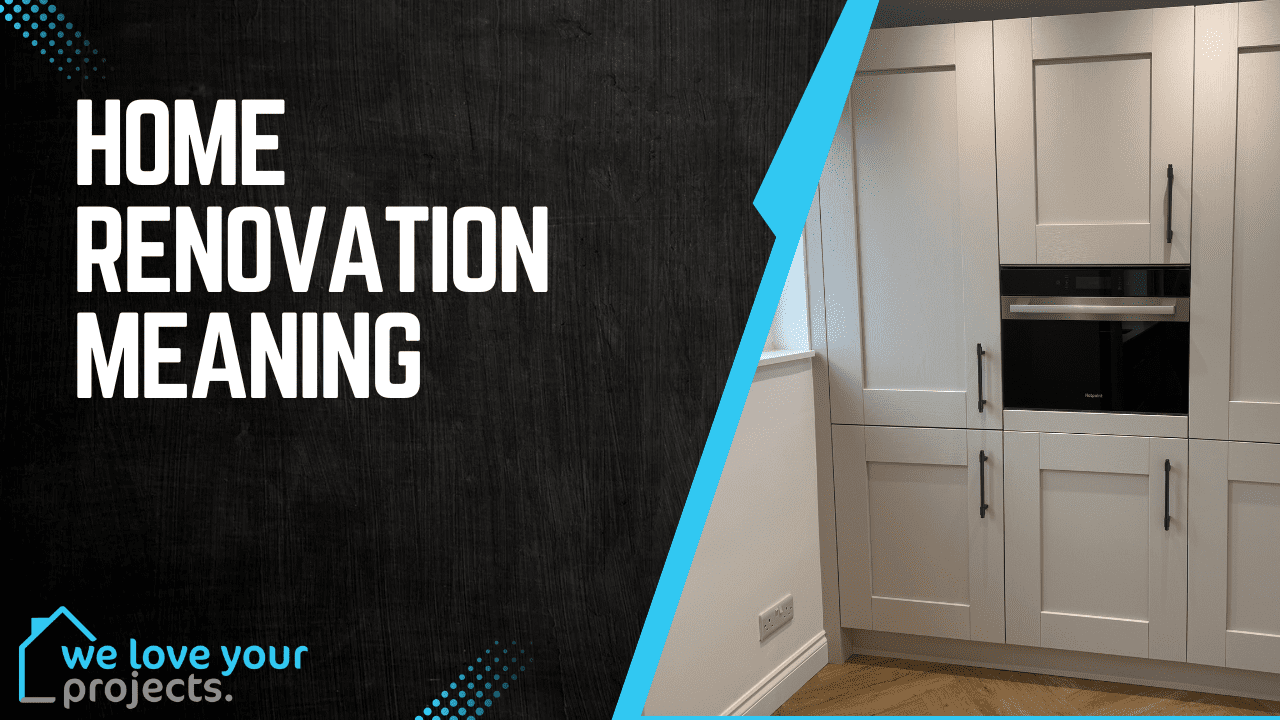
06 Aug Home Renovation Meaning: What Does It Really Involve?
Table of Contents
- Introduction
- What Is Home Renovation?
- Types of Home Renovation
- Why Do People Renovate Their Homes?
- The Home Renovation Process
- Benefits of Home Renovation
- Conclusion
Introduction
When people talk about home renovation, they’re often referring to the process of improving, updating, or altering a house. Whether it’s refreshing a tired room, changing the layout, or completely transforming the space, home renovation can add both value and style to a property. But what exactly does home renovation mean, and what does the process involve?
In this guide, we’ll explain the meaning of home renovation, explore the different types of renovations, and help you understand why people choose to renovate their homes. We’ll also look at the benefits and give you an overview of the renovation process to help you decide if it’s right for you.
What Is Home Renovation?
Home renovation refers to the process of improving or restoring a residential property. It can involve replacing outdated features, remodelling existing spaces, or even adding new rooms. Essentially, it’s about making a house more comfortable, functional, and aesthetically pleasing.
Home renovations can range from simple cosmetic upgrades (like painting a room) to extensive structural changes (such as adding an extension or converting a loft).
Key Elements of Home Renovation:
- Structural Changes: These are modifications to the framework of the building, such as removing or adding walls, altering floor plans, or changing the shape of the roof.
- Cosmetic Updates: These involve surface-level changes, like repainting, replacing flooring, or updating fixtures.
- Functional Improvements: Homeowners may choose to update or replace old systems, such as plumbing, electrical, or heating, to improve energy efficiency or safety.
What to Expect:
- Home renovation projects can vary in scope and cost, depending on what’s being done. Whether you’re updating a few rooms or completely overhauling your home, there’s a wide range of options available.
Types of Home Renovation
Home renovation projects come in various forms, depending on the goals of the homeowner. Some renovations are small and involve updating fixtures or furniture, while others are extensive and involve major construction work.
Common Types of Home Renovation:
- Kitchen Renovation: This could involve replacing appliances, updating cabinetry, changing worktops, or even completely redesigning the layout to enhance functionality.
- Bathroom Renovation: Updating or replacing features such as baths, showers, sinks, and toilets, and improving the room’s layout and style.
- Living Room Renovation: Refreshing the décor, updating flooring, or redesigning the room to better suit modern living needs.
- Loft and Basement Conversions: Transforming unused attic or basement space into functional rooms, such as bedrooms, offices, or living areas.
- Extensions: Adding extra square footage to a property, such as a new bedroom, kitchen, or conservatory, to enhance space and increase property value.
- Exterior Renovation: This includes updating the façade of the house, such as replacing windows, repainting the exterior, or installing new roofing.
What to Expect:
- Each type of renovation can range from minor to major projects. A kitchen renovation might take 2–4 weeks, while a loft conversion could take 2–3 months.
Why Do People Renovate Their Homes?
People renovate their homes for various reasons, including improving the aesthetics, functionality, or energy efficiency of their property. Here are some common motivations for home renovation:
Common Reasons for Renovation:
- Increase Property Value: Homeowners often renovate to increase the value of their property, making it more appealing to potential buyers.
- Personalisation: Many people renovate to create a space that reflects their personal style or to make it more suitable for their needs (e.g., adding an office space or larger kitchen).
- Repairs and Maintenance: Older homes may require renovation work to fix structural damage, update plumbing or electrical systems, and address wear and tear over time.
- Energy Efficiency: Renovations can be a great opportunity to install energy-efficient features, such as double-glazed windows, better insulation, or energy-efficient appliances, which can reduce running costs.
- Comfort: Sometimes, a renovation is simply to make a home more comfortable, whether that means adding more living space or improving lighting and ventilation.
What to Expect:
- Renovations driven by value or comfort are often the most straightforward, while those focused on repairs or energy efficiency may require more extensive work.
The Home Renovation Process
The process of renovating a home can be broken down into several stages, each requiring careful planning and consideration. Here’s a breakdown of the typical renovation journey:
Key Steps in the Renovation Process:
- Initial Planning and Design: Start by deciding on your goals, creating a design, and setting a budget. This is the stage where you define the scope of your project and select your materials.
- Hiring Contractors: Once your plans are in place, hire the necessary contractors (builders, electricians, plumbers, etc.). It’s important to get multiple quotes and check references.
- Obtaining Permits: Some renovations may require permits, especially if you’re making structural changes or updating plumbing and electrical systems.
- Demolition and Preparation: Once all permissions are in place, the renovation begins with demolition (removing old fixtures or walls) and site preparation.
- Construction and Installation: This is the phase where new work (such as laying flooring, installing new cabinets, or fitting plumbing) is completed. See the typical timeline in our guide: How Long Does It Take to Renovate a House?
- Finishing Touches: The final phase includes decorating, cleaning, and adding any last details to make your home feel complete.
What to Expect:
- Renovation timelines can vary depending on the project size and complexity. Smaller projects might take 4–6 weeks, while larger ones may take several months.
Benefits of Home Renovation
Renovating your home can have numerous advantages, both in terms of your enjoyment of the space and its potential value.
Key Benefits:
- Increased Property Value: A well-executed renovation can increase the value of your home, making it a worthwhile investment if you plan to sell in the future.
- Enhanced Comfort and Functionality: Renovations allow you to tailor your living space to your needs, improving your comfort and daily functionality.
- Modernisation: Updating your home to incorporate modern designs and technology can make your home feel more stylish and up-to-date.
- Energy Efficiency: Adding energy-efficient features can reduce running costs and contribute to a more sustainable lifestyle.
What to Expect:
- Renovations that focus on improving comfort and energy efficiency can offer long-term savings, while those aimed at increasing property value may yield a quicker return on investment.
Conclusion
Home renovation can breathe new life into an old property, improve your quality of life, and even increase your home’s value. Whether you’re looking to add more space, update the design, or make your home more energy-efficient, the renovation process offers endless possibilities. Understanding the meaning of home renovation, the steps involved, and the potential benefits can help you plan and execute your project with confidence.
Ready to get started on your home renovation? Contact us today for a free consultation and let us help you turn your vision into reality.

No Comments